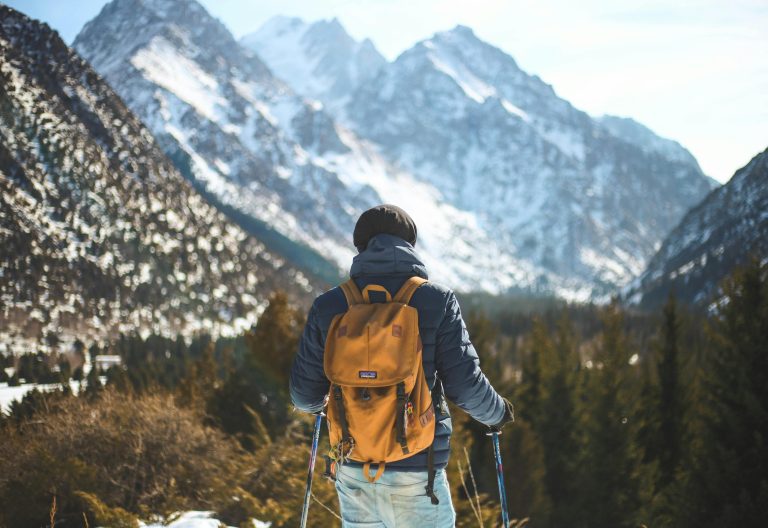Embarking on a hiking adventure is an incredible way to connect with nature, challenge yourself physically, and discover breathtaking landscapes․ However, a successful and enjoyable hike hinges on being adequately prepared with the right gear․ This article will guide you through the essential hiking equipment, ensuring your safety and comfort on the trail․ Choosing the correct gear can make the difference between a memorable experience and a regrettable one․ So, let’s explore the items you need to make the most of your outdoor journey!
The Foundation: Essential Hiking Gear Categories
Before diving into specific items, let’s categorize the essential hiking gear into broad groups to better understand their purpose and importance․
- Navigation: Tools for finding your way․
- Protection: Gear for shielding yourself from the elements․
- Sustenance: Items related to food and water․
- Safety & First Aid: Supplies for emergencies and injuries․
- Comfort: Gear that enhances your overall experience․
Navigation: Staying on Course in the Wilderness
Getting lost is a hiker’s worst nightmare․ Reliable navigation tools are paramount for staying on the right path․
Map and Compass: The Classic Duo
While technology is helpful, a traditional map and compass are indispensable․ Learn how to use them effectively before your hike․
GPS Device or Smartphone with GPS: Digital Assistance
A GPS device or smartphone with a hiking app can provide real-time location information and track your progress․ Remember to carry a power bank for longer trips․
Protection: Shielding Yourself from the Elements
The weather can change rapidly, especially in mountainous regions․ Protecting yourself from sun, rain, wind, and cold is crucial․
Sun Protection: Guarding Against Harmful Rays
Sunscreen, sunglasses, and a wide-brimmed hat are essential to protect your skin and eyes from the sun’s harmful UV rays․
Rain Gear: Staying Dry in Wet Conditions
A waterproof jacket and pants will keep you dry and comfortable in rainy weather․ Look for breathable materials to prevent overheating․
Appropriate Clothing: Layering for Versatility
Dress in layers to adapt to changing temperatures․ Avoid cotton, which absorbs moisture and can leave you feeling cold․ Opt for synthetic or wool fabrics․
Sustenance: Fueling Your Body for the Adventure
Hiking requires energy․ Carry enough food and water to keep yourself fueled and hydrated throughout your trip․
Water: The Elixir of Life
Carry enough water for your hike․ A general rule of thumb is to carry at least 2 liters of water per day․ Consider using a hydration reservoir or water bottles․
Food: Energy on the Go
Pack high-energy snacks such as trail mix, energy bars, nuts, and dried fruit․ Choose lightweight and non-perishable options․
Safety & First Aid: Prepared for the Unexpected
Accidents can happen even on well-maintained trails․ A well-stocked first aid kit can make a significant difference․
First Aid Kit: Addressing Minor Injuries
A comprehensive first aid kit should include bandages, antiseptic wipes, pain relievers, blister treatment, and any personal medications․
Emergency Whistle: Signaling for Help
A whistle can be heard over long distances and is an effective way to signal for help in an emergency․ The standard signal is three short blasts․
Comfort: Enhancing Your Hiking Experience
While not strictly essential for survival, certain items can significantly enhance your comfort and enjoyment on the trail․
Hiking Boots: Protecting Your Feet
Sturdy hiking boots with good ankle support are essential for preventing injuries and providing traction on uneven terrain․ Ensure they are properly broken in before your hike․
Hiking Poles: Reducing Strain on Joints
Hiking poles can reduce strain on your knees and ankles, especially on steep inclines and descents․ They also provide added stability․
FAQ: Common Questions about Hiking Gear
Here are some frequently asked questions regarding essential hiking gear․
| Question | Answer |
|---|---|
| What is the most important piece of hiking gear? | While all gear is important, proper footwear is arguably the most crucial․ Good hiking boots can prevent blisters and ankle injuries․ |
| How much water should I carry? | A general rule of thumb is to carry at least 2 liters of water per day, but adjust based on the weather and intensity of your hike․ |
| Can I use my phone as a GPS? | Yes, but remember to download offline maps and conserve battery life․ A power bank is highly recommended․ |
| What should I do if I get lost? | Stay calm, retrace your steps if possible, and use your map and compass to find your way back to the trail․ If you can’t find your way, stay put and signal for help using your whistle․ |
Being prepared with the right hiking gear is paramount for a safe and enjoyable outdoor experience․ From navigation tools to protective clothing, and from sustenance to safety equipment, each item plays a crucial role in ensuring your well-being on the trail․ Investing in quality gear and learning how to use it properly is an investment in your safety and comfort․ Remember to always check the weather forecast before heading out and adjust your gear accordingly․ By prioritizing preparedness and respecting the power of nature, you can create unforgettable memories on your hiking adventures․ Safe travels and happy trails!

